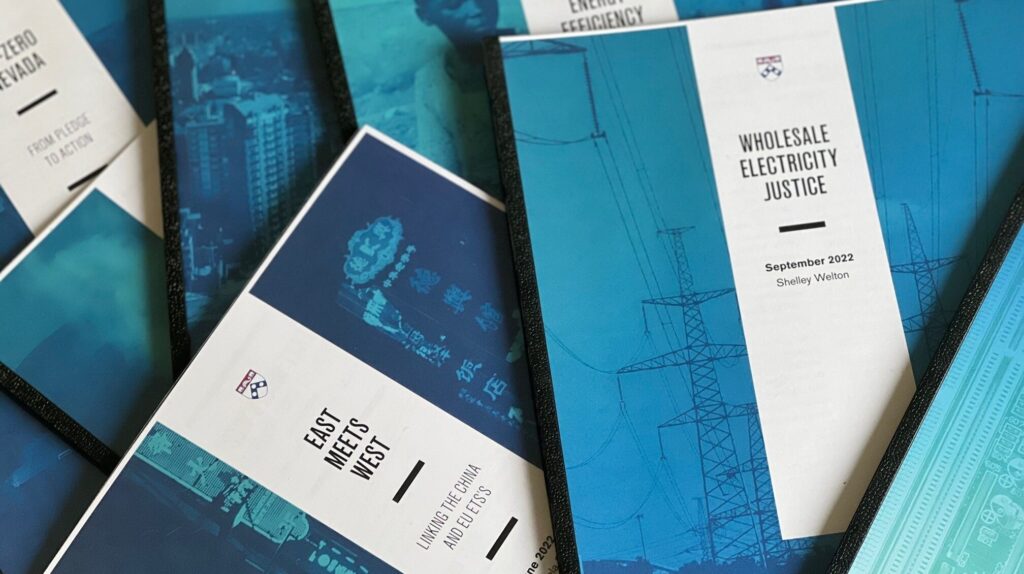Spark Magazine
An Anthology of Student Work
Publish your energy ideas in our annual student publication.

Welcome to the Spark!
The Student Published Anthology of Research at Kleinman (SPARK) is an annual magazine offering all Penn students the opportunity to publish articles on an energy research topic of their choice.
Spark submissions will be reviewed by the Kleinman Center’s Student Advisory Council. This council will ultimately decide which articles to include in the final publication. If your submission is selected for review, we expect you to work with the student editorial board and submit timely revisions responding to the council’s feedback.
Spark Submission Guidelines
Your Spark submission must be…
- Brief: between 1,000-1,500 words
- Timely: Relate to current energy policy or technology challenges
- Energy Focused: Provide insights, research, data, and analysis
- Policy Focused: Make clear policy connections
- Clear: Use plain language with explanations of technical terms.
- Engaging: Include active verbs, stories, case studies, and/or visuals
All Spark submissions must focus on a topic related to energy research. Submissions can describe research that you have been involved in at Penn, or can explore a new topic of interest to you. Your submission could, for example, touch on any of the following topics:
- Technological building blocks of the energy transition
- Carbon and resource management
- Sustainable cities
- Energy access, justice, and public health
- Financing the energy transition
- International climate negotiations
- Energy law and regulation
How to Submit
Please submit your Spark Submissions using this form.
Deadline Extended! Please send your submissions by January 11, 2023.
Who Can Submit?
All members of the Penn undergraduate or graduate student community are encouraged to submit to the Spark. We strive to include a variety of student authors from diverse disciplines and institutions.
Additional Submission Details:
Key Elements
For consistent style, your magazine submission must include the following elements:
- A short Title (< 70 characters)
- Example: The Opportunities and Limitations of Seasonal Energy Storage
- Short Section Headers (< 30 characters)
- Example: India’s Big Challenge
- Colorful Graphs / Tables / Charts / photos (maximum of 2 —with titles and sources)
- In-Line, Parenthetical Citations (required)*
- Example: Indonesia’s past 20 years of economic and population growth have challenged the national energy sector and contributed to power outages and low electrification rates (The World Bank 2010).
- References (required)*
- Example (single citation): Thaler, J. 2012. “Fiddling as the World Floods and Burns” Environmental Law 41, 1101-1156.
Style
We follow the Chicago Manual of Style Author-Date format: http://www.chicagomanualofstyle.org
Production
Graphics
The magazine is published online as a web page and a PDF. The PDF requires high-resolution images for quality printing. Our designers may reformat your images according to our style.
When delivering your final Word doc, please attach separate image files for:
- Excel source data (charts, tables, etc.)
- Author-created graphics
- Non-original graphics (with sources)
If the image is rasterized (jpg, png, etc.), please include the highest possible resolution. If the image is embedded in a PDF, please save just the page containing the image (as its own file). To help ensure accuracy, name your image files according to the name of your digest title and the figure numbers, such as: ChasingWindmillsFig1.jpg.
Accessibility
In addition to these image files, we also require accessible descriptions of each image for our visually impaired audiences. Please supply a separate Word doc with detailed descriptions. The following is an example:
Figure 1: This figure shows a pie chart breaking down global greenhouse gas emissions by economic sector. Approximately 25% of global emissions comes from electricity and heat production, 24% comes from agriculture, forestry, and other land uses, 21% comes from industry (the focus of this digest), 14% comes from transportation, 6% comes from buildings, and 10% comes from other energy demands.
If you are interested in serving on the Kleinman Student Advisory Council for the 2023-2024 academic year, please reach out to Oscar Serpell (serpello@upenn.edu).